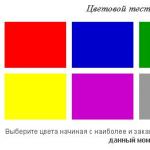Those who have been reading me for a long time know that the Khersones lighthouse is one of my favorite places in Crimea. The number of times he appeared in my posts, not many places appeared. Perhaps Fiolent or Ai-Petri... I’ve been near the lighthouse dozens of times, but I haven’t been able to get inside...

The Chersonesos lighthouse is familiar and recognizable to many. It is located at the entrance to Sevastopol Bay, in its southwestern part, on the tip of Cape Chersonesos protruding far into the sea (not to be confused with the Chersonesos nature reserve, which is located directly in the city of Sevastopol). The first information about a lighthouse in these places appeared in 1789, 6 years after Russian warships first entered Akhtiyar Bay. The development of a naval military base and the foundation of the city of Sevastopol also required the organization of navigation facilities. One of which became the Chersonesos lighthouse.

Construction of the Khersones lighthouse began in 1816 together with the Tarkhankut lighthouse. The choice of location and construction was supervised by Leonty Spafarev, director of lighthouses in the most developed water area in this regard. Russian Empire- Gulf of Finland.

The lighthouse tower was a 36-meter hollow stone cone with two-meter walls at the base. Towards the level of the lighthouse room, the thickness of the walls decreased to one meter. As operating experience has shown, the safety margin of the structure made it possible to successfully withstand colossal alternating wind loads, impacts of storm waves and even seismic shocks. The lighthouse survived the most serious Crimean earthquake of the 19th-20th centuries, which occurred in 1927.

Back in the 19th century. houses were built near the tower for the lighthouse servants. At first, the servants huddled in just a few rooms, but later a small residential lighthouse town appeared, which, however, more than once suffered from storms and storms. Nowadays, one of the premises is equipped as a lighthouse and technical room. It contains all the necessary radio equipment, as well as an automatic system that controls the beacon.

At the very beginning, in 1816, the light source at the lighthouse was fifteen Argand lamps with a cotton wick soaked in rapeseed oil. The burner, protected by a glass cap open on top, resembled the kerosene lamp we are used to (although the latter, however, was invented only 37 years later). The lamps were placed at the focus of polished parabolic mirrors. Later, the lighting apparatus was modernized to provide flashing mode of operation. Mirrors and lamps were placed on a round float lowered into a bowl of mercury. A complex gear mechanism, the principle of which is similar to the operation of a watch with weights, gave the float uniform rotation at a given speed.
IN late XIX V. the mirror illuminator was dismantled. Instead, they installed a light-optical apparatus based on Fresnel lenses, consisting of concentric rings of small thickness adjacent to each other, having a prism-shaped cross-section. After the war, the lighting system was again modernized and the flashing mode of operation was no longer ensured by the rotation of the optical apparatus, but by periodically turning the lamp on and off.
Today, there is no longer a need for the constant presence of a caretaker in the lighthouse room on the tower, manually lighting the lighthouse and monitoring that the light does not go out. All this is controlled by an automatic system in the service building near the lighthouse.

At the appointed time, the caretaker only has to turn the beacon switch knob.

He looks at the appointed time in the illumination table, which is compiled for each month based on the time of dawn and sunset of each day.

These are watches that are suspended in a special system that neutralizes the influence of earth gravity.

Direct communication device with the main navigation service and a sticker with call signs.

On the wall in the lighthouse keeper's room is an old-school safety poster and an equally old-school battery-powered flashlight. But only mobile phone betrays modernity.

But it's time to go inside the tower. After all, the most interesting things are ahead.

Despite the signs with the year 1816, the tower itself is not 200 years old. During the Great Patriotic War(1941–1945) the tower was almost completely destroyed and rebuilt in 1950–1951. made of reinforced concrete, lined with Inkerman white stone.

How is the lighthouse tower constructed? As I already said, it has a height of 36 meters. The lower part is a hollow cone with a spiral staircase and four tiers of skylights to illuminate the staircase. In the upper part there is a lighthouse room (with a round window and a fence along the contour), which initially housed the lighthouse ignition system, and also housed the keeper at night. At the very top there is a cap in which the lamp is located. The canopy has 360-degree glazing so that the light of the lighthouse can be seen from everywhere.

Lighthouse room under a light dome. The ceiling is low and there is absolutely no room to turn around. A small desk, an emergency telephone and a small porthole window.

And now - the holy of holies - a lighthouse lamp appears in the hatch, burning in the night.

Today, a system with a quartz-halogen lamp with a power of 1 kW is used, installed during the post-war reconstruction of the lighthouse in 1951. The flashing mode of operation is ensured not by rotating the optical apparatus, but by periodically turning the lamp on and off. Moreover, the alternation of pulse durations ensures the transmission of the “SV” - Sevastopol signal in Morse code. In addition, the KRM-300 circular radio beacon operates on the cape, transmitting the same “SV” signal to a range of up to 150 miles (280 km). In addition to it, there is equipment for a more accurate Mayak-75 navigation system, the operating principle of which is based on measuring the time between the signals of the master and slave stations and calculating the distance to them. The Mayak-75 station operates in conjunction with similar ones located on capes Tarkhankut, Fiolent and near Genichesk.

The moment of ignition of the lamp. Then it is physically impossible to look at her.

View of the lighthouse town from the lighthouse tower. The town also did not appear immediately. At first, the service personnel huddled in tiny, poorly heated houses - 20 people in 4 rooms. In the early 1870s, the first two-story building was built to accommodate lower ranks. True, this building was severely damaged by the storm of 1876. After the storm, a breakwater was erected around the lighthouse, protecting the tower and the lighthouse town from the sea. Today there are several two-story buildings in which people live, who in one way or another ensure or have ensured the functioning of the lighthouse and its equipment.

At night, the lighthouse offers beautiful views of the open sea. By the way, the light of the lighthouse on a clear night is visible from about 16 miles (30 kilometers) away.

Lighthouse tower at night.

This is what the 36-meter tower looks like from the sea.

One of dozens of sunsets I spent on the shore under the lighthouse.

Evening Chersonesos lighthouse.

The Sevastopol lighthouse on Cape Chersonesus is one of my favorite city attractions. Now this lighthouse is in its 200th year of life. During the war, however, it was completely destroyed. But as soon as the city was liberated, the lighthouse was immediately restored. And so he, like in the good old days, continues to show the way to the ships. I myself have been exposed to its light on various occasions for many years. So he is not just an acquaintance for me!
Next summer the lighthouse will turn 200 years old and I will try to make an anniversary report. For now, let's take a little look at it from the inside.
2 This memorial plaque greets me at the entrance to the territory
3 The sunset begins, but this time it is not my goal 
4 Memorial plaque inside the lighthouse 
5 Unlike its brother, the Tarkhankut lighthouse, which has its original screw ladder, our lighthouse has a concrete one. One and a half hundred steps lead up 
6 And here we are at the top. This lamp gives light! 
7 I tried to photograph it at the moment of launch. When it lights up, the light is simply blinding! 
8 Such bright light is produced by a lamp with a power of only 1 kilowatt. But, thanks to a special device based on Fresnel lenses, the focused beam is visible at a distance of 16 nautical miles. It's almost 30 kilometers! 
9 This lamp is located in a cap with circular glazing so that the light of the beacon can be seen everywhere 
10 The lighthouse sends light into the darkness using Morse code. The light pulses form the letters SV, which means "Sevastopol". This is done so as not to confuse it with others, but I once witnessed when our navigators took us not to the Khersones lighthouse, but to the lighthouse of Cape Sarych. But that's the same... 
11 And this is the town where the lighthouse keepers and technical staff live and from where the lighthouse is controlled directly 
12 This is the lighthouse technical building 
13 But it’s time for us to go down. My tripod is waiting for me on the duty table at the porthole 
14 At this point the concrete ladder turns into a vertical metal one, leading to the holy of holies of the lighthouse 
14 Everything inside is clean and beautiful. The gangway takes us outside 
15 The height of this white stone beauty is 36 meters 
16 It is especially beautiful at sunset 
17 And, of course, at night, when he argues with the light of the stars
Some travelers (there are such in all countries of the world) take a tour to water spaces not to swim, get a “long-lasting” tan or catch a big wave by climbing on the surf. They are attracted exclusively by the beauty of the seaside surroundings, and it consists not only of natural tracts or the picturesque sky over the ocean. It is appropriately complemented by masterpieces of engineering architecture. Sevastopol also possesses these “guardians of the sea”. Khersones lighthouse is one of them.
Where is the signal tower located in Sevastopol?
On the electronic map of the 92nd region, if we zoom in substantially, we will notice several lighthouses at once. However, none of them compares to the one built on the western tip of the city - the extreme ledge. Visitors should not confuse it with the same name, which is located closer to the center of the metropolis - between and bays.
Lighthouse on the map of Crimea
Open map
History of origin at Cape Chersonesos
The westernmost cape of Bolshoy began to send signals to shipbuilders back in the Middle Ages. However, the first “lights” resembled modern lighthouses very vaguely - they were towers where a fire was made. In the 1780s, when the Sevastopol Bay was conquered by Russian troops, a “temporary shelter” appeared here, allowing our ships to successfully return to their home port.
What we see now is not the first capital lighthouse in Sevastopol (the previous one was rebuilt in 1814-1816 - simultaneously with). This unit was destroyed during the battles for the liberation of Crimea - already in 1944, although it withstood more intense shelling two years earlier. It was restored only in the 1950s, and modernized in the 21st century.
Legends and myths
Some townspeople believe in interesting story about the lighthouse, associated with the period of the Second Defense of Sevastopol. The fact is that it was under this tower that its last defenders died. The Nazis wanted to completely destroy the structure itself - they “hit” it point-blank with naval artillery and dropped bombs from airplanes. However, the navigational aid somehow survived. At the same time, a constant glow occurred in the sky above him, forcing many fighters, usually from rural areas, to believe in the power of the long-time patron of Russian sailors - St. Nicholas the Wonderworker.
What is interesting about the Chersonesos lighthouse?
“A white colossus against a clean background blue sky", "It's a must visit!" — quite often these are the epithets and advice that come to mind among tourists who have seen the Chersonesos lighthouse up close. Sevastopol, as such, has already been examined, and a trip around its environs should begin precisely from Mayak-2. Why? It's simple. The equipment installed on it has no analogues in Europe - the lamp power is 1000 W, and the light range is 16 miles.  These figures eclipse even the performance indicators of the light-signal installation near the French island of Ouessant (in the English Channel).
These figures eclipse even the performance indicators of the light-signal installation near the French island of Ouessant (in the English Channel).
Speaking about the architecture of the building, it is necessary to mention its height (from the base to the spire) - 36 m. The tower has 5 floors, the 6th level is a platform for the lantern itself, powered by a separate substation. The excursion about which we're talking about, should start from the shores closest to the lighthouse. Here you can walk completely fearlessly along the huge runway of the military airfield (the fact is that it is no longer operational) or take a photo against the backdrop of the remains of pillboxes from the Second World War.
Behind the airfield, a dirt road leads through the wasteland - to a coast completely unsuitable for swimming, to the south of which high-ranking Sevastopol soldiers hid from prying eyes. The high-rise structure is clearly visible from here, although its very base will be hidden by the fence of the military unit - today military personnel carry out maintenance of the lighthouse, in addition to performing their main tasks.
How to get there?
Once at the bus station or railway station(at the base of the South Bay), go to the Trolleybus Descent. Follow it to . Next, a guest of Sevastopol can use motor transport on route 77. Its final destination is “Mayak-2” (these are the banks of the “Kazachka”). From here you should walk 12 minutes along the road that the driver will show you, the main thing is not to turn anywhere, the perimeter of the military base is everywhere.
By car you can get to the Chersonesos lighthouse from the city center as follows:
Open map
Note to tourists
- Address: Khersonessky Mayak street, Sevastopol, Crimea, Russia.
- Coordinates: 44.583338, 33.378846.
The Chersonesos lighthouse in Sevastopol, among others, has earned several striking reviews - “The whole mood was spoiled by a fresh fence from the Ministry of Defense” or “How can you swim here - these are huge stones?...”. Friends, if you are smart enough, you will not demand that the guards at a military facility let you into the territory. And about swimming - did you really suffer for 55 minutes on a crowded bus for the sake of the beach? People come here to immortalize the most powerful lighthouse in Europe on camera! Watch a short video about him in conclusion.




